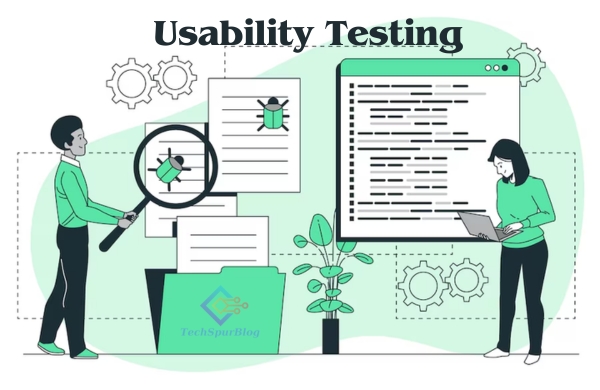
The basis of the success of a tech company is usability testing because when their software, sites, and mobile applications conduct what the users want and do it in a familiar way, these companies fully succeed.
This guide focuses on the benefits such as software/web usability testing, usability testing solutions, and mobile functional testing for the benefit of tech companies.
What is Usability Testing?
Usability testing is a way of testing products on the users who can represent the market and this method reveals whether a product is usable or not.
It shows that there are usability problems, calculates the user satisfaction level, and then allocates the experience to be user-friendly.
The user acceptance of tech products is high to the extent that these companies incorporate usability testing at developmental stages right from initial prototypes to final rollout.
Also Read: Relevance of Software Testing Tools in building of an Efficient QA Strategy
Key Benefits of Usability Testing
1. Identifying User Pain Points:
Usability testing is a tool that companies use to find out where their customers are getting stuck or encountering other problems while they are using their software or applications.
Through this knowledge, companies can make well-informed choices that will help to enhance the user experience and client satisfaction.
2. Optimizing User Interfaces:
Through usability testing, firms get to understand how users interact with user interfaces (UIs) and are able to modify the UI components like navigation menus, buttons, forms, and layouts efficiently.
This optimization results in more intuitive and user-friendly interfaces that consequently make the software products easily learned and used.
3. Enhancing Product Performance:
With the software usability testing feature, tech companies can test how their product does in real-world scenarios. The testing process should incorporate an assessment of the application’s features, responsiveness, and performance on all devices and platforms.
4. Increasing User Satisfaction:
Web usability testing and mobile functional testing reveal what people love or hate about the products, how and why they use them, and what would make them choose one product over another.
Through solutions that turn user needs into products, firms can achieve higher levels of satisfaction and loyalty among customers which in turn boosts the rate of retention and healthy reviews.
5. Reducing Development Costs:
Usability testing from the very beginning of the process can help to avoid the expenses that can be caused by significant defects.
The time and asset drain required for the search of issues connected to usability can be reduced or completely eliminated if tech companies are to solve this problem preemptively, thus, cost control is an achievable goal.
6. Gaining Competitive Advantage:
Tech firms that have advanced usability testing make the magic to separate themselves from the competition by providing users with a better experience. Successful user experiences deliver higher market shares, customer gains, and brand reputation.
7. Enhanced Accessibility Compliance:
It is usability testing that contributes to the accessibility compliance of digital goods which include sites and mobile applications among many others.
The subsection of the usability test called the accessibility test, aims at finding out how convenient for users with disabilities it is to use and gain the products.
8. Data-Driven Decision-Making:
Usability tests give tech companies the desired data and necessary insights that drive data-driven decision-making throughout the product development lifecycle.
This knowledge is a leverage that firms use to make decisions based on user feedback during testing and after.
Also Read: Best Automation Testing Tools: Streamlining Software Quality Assurance
Process of Usability Testing
1. Define Objectives:
It is evident to describe what the usability testing aims at and the goals it addresses. Identify important metrics like the rates of task completion, error rates, and how much users like the app.
2. Recruit Test Participants:
Choose well-represented users who are of different age groups, and experience levels, and who belong to the target audience. Guarantee the inclusion of people from different backgrounds and contribute to a broad scale of outputs.
3. Create Test Scenarios:
Create test patterns that are close to reality and resemble how a user would interact with the product. Describe user interface tasks with regard to usability, functionalities, and user gratification.
4. Conduct Testing Sessions:
Organize usability testing sessions with the participants both physically and remotely. Motivate the participants to think all along to share their thought processes as they complete the assignments.
5. Collect and Analyze Data:
Gather quantitative and qualitative information from tests such as task completion times, logs of errors, user feedback, and observations. Look for trends, patterns, and gaps in navigation. Gather information about the effectiveness of user tasks.
6. Iterate and Improve:
Apply the results of usability testing up to optimizing design elements and correcting difficulties of usability. Keep on enhancing the product by introducing recurrent new features, while simultaneously modifying currently existing features based on user feedback and after numerous product testing rounds.
Also Read: Top Automation Testing Tools for Software Performance
Conclusion
The technique of usability testing can be a crucial method for companies within the technological sphere to adapt to having an amazing user experience and thus business success.
They can increase the quality of products, please end-users, lower the cost, and increase competitiveness in the global market with usability testing solutions such as software usability testing, web usability testing, and mobile functional testing.
Developing and implementing usability testing as an integral part of the development phase helps tech companies make products that appeal to the end users and lead to lasting success.

Leave a Reply